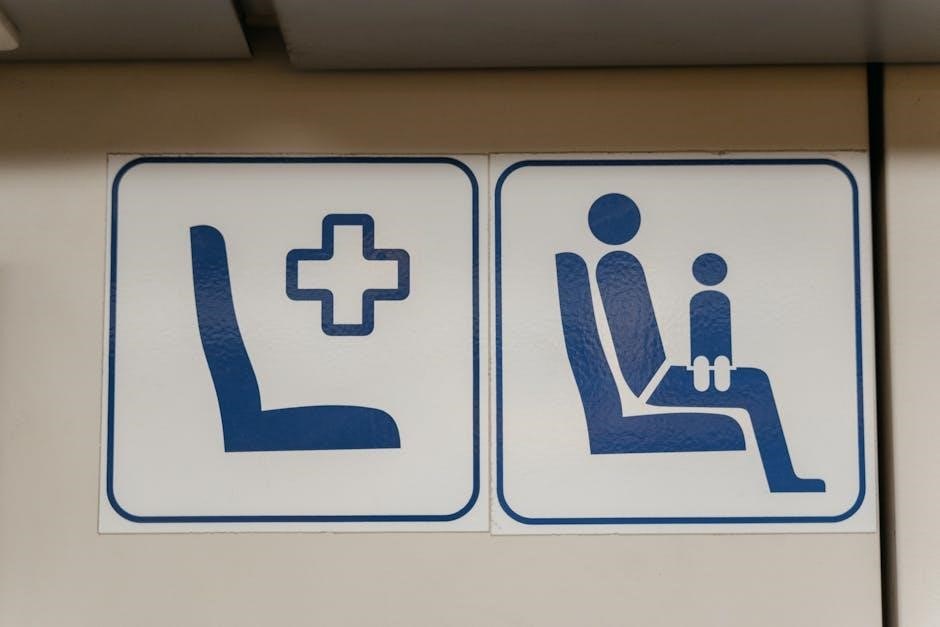Harriet Tubman: Conductor on the Underground Railroad
Harriet Tubman, born Araminta Ross, was a pivotal conductor on the Underground Railroad․ She risked her life to guide enslaved people to freedom, demonstrating extraordinary courage and unwavering dedication to liberation․
Early Life and Enslavement
Born around 1820 in Dorchester County, Maryland, Harriet Tubman, originally named Araminta “Minty” Ross, endured a childhood marked by the harsh realities of enslavement․ Subjected to brutal treatment and forced labor, she experienced firsthand the dehumanizing effects of the institution․ Her early life shaped her determination to escape and liberate others․ The rumors that she was about to be sold after her owner died in 1849 further fueled her desire to attain freedom․ These early experiences profoundly influenced her later role as a conductor, driving her commitment to the Underground Railroad․
Escape to Freedom
In 1849, Harriet Tubman bravely escaped slavery, seeking refuge in Philadelphia․ This pivotal moment marked the beginning of her extraordinary journey towards becoming a beacon of hope for countless others․
Journey to Philadelphia in 1849
Faced with the threat of being sold after her owner’s death, Harriet Tubman resolved to escape enslavement․ In 1849, she embarked on a perilous journey to Philadelphia, a city renowned for its abolitionist sentiment and free Black community․ This escape marked a turning point in her life․ Guided by the North Star and aided by sympathetic individuals, Tubman navigated through treacherous terrain, relying on her wit and resilience․ Successfully reaching Philadelphia, she found not just freedom, but a renewed purpose: to liberate others from the bonds of slavery․

The Underground Railroad
The Underground Railroad was a clandestine network of safe houses and abolitionists․ They helped enslaved people escape to freedom in the North and Canada, defying unjust laws and risking their own safety․
Tubman’s Role as a Conductor
Harriet Tubman’s role as a conductor involved nineteen trips to the South after her own escape to freedom in Philadelphia in 1849․ She fearlessly guided hundreds of enslaved people along the Underground Railroad, facing immense personal risk to liberate others; Known as the “Moses of her people,” Tubman’s leadership was crucial in navigating the intricate network of safe houses and supporters․ Her unwavering determination and strategic planning ensured the successful passage of countless individuals seeking freedom from the brutal realities of slavery․ She “never lost a passenger” on her dangerous journeys to freedom․
Routes and Safe Houses
The Underground Railroad utilized intricate networks of routes and safe houses to aid escaping slaves․ These routes, spanning land and maritime paths, connected communities of abolitionists and sympathetic individuals․ Safe houses provided temporary shelter, food, and essential support for those fleeing enslavement․ The network extended from the Southern states to Canada, a major destination for freedom seekers․ Harriet Tubman skillfully navigated these routes, relying on secret codes, trusted contacts, and her deep understanding of the landscape․ The Underground Railroad exemplifies the collective effort and courage required to challenge the institution of slavery and assist individuals in their pursuit of liberty․
Primary Source Documents
Primary sources offer direct insights into Harriet Tubman’s life and the Underground Railroad․ These include firsthand accounts, narratives, and historical records that illuminate this pivotal era in American history․
Newspaper Accounts of the Era
Newspapers from the slavery era offer invaluable primary sources, providing contemporary perspectives on the Underground Railroad and Harriet Tubman’s activities․ These articles capture the risks she undertook, showcasing her heroism․ They also highlight the broader context of the abolitionist movement and the challenges faced by those seeking freedom․ Current newspapers provide helpful secondary accounts․ Examining these historical records allows us to understand the urgency and significance of Tubman’s actions in the fight against slavery, enriching our comprehension of this crucial period․
Harriet Tubman’s Own Words and Narratives
Accessing Harriet Tubman’s own words and narratives provides unparalleled insight into her experiences and motivations․ Though direct writings are scarce, narratives compiled by others, like Sarah H․ Bradford, offer firsthand accounts of her daring exploits on the Underground Railroad․ These narratives vividly depict the dangers, challenges, and unwavering resolve that defined her mission to liberate enslaved people․ They reveal her deep faith, strategic brilliance, and profound empathy․ Through these accounts, we gain a personal connection to Tubman’s legacy and a deeper understanding of her impact on American history․

Harriet Tubman’s Legacy
Harriet Tubman’s legacy endures as a symbol of courage, freedom, and selfless service․ She is remembered as a conductor, Civil War scout, nurse, and a champion for human rights and equality․
National Historical Park in Auburn, New York
The Harriet Tubman National Historical Park in Auburn, New York, stands as a tribute to her life and work․ Formally established, the park preserves sites associated with Tubman’s later years, including her home for the aged․ Visitors can explore her property and learn about her activism․ It serves as a place of remembrance and education, ensuring her story continues to inspire future generations and promoting reflection on the fight for freedom․ The park preserves key locations of her legacy, ensuring her contributions are always remembered․
Commemorative Coin Program
The U․S․ Mint’s Harriet Tubman Commemorative Coin Program honored her legacy through specially designed coins․ This program provided an opportunity to support the National Underground Railroad Freedom Center․ The coins serve as tangible reminders of her contributions to the fight against slavery․ They symbolize her courage and unwavering commitment to freedom․ Collectors and supporters purchased these coins to commemorate her extraordinary life․ The program helped raise awareness about her role in American history․ These coins are lasting tributes, celebrating her legacy and supporting historical preservation efforts related to the Underground Railroad and the pursuit of equality for all․

Civil War Service
During the Civil War, Harriet Tubman served as a scout, nurse, and spy for the Union Army․ Her knowledge of the South proved invaluable in various military operations․
Scout, Nurse, and Spy
Harriet Tubman’s Civil War service was multifaceted․ As a scout, she utilized her familiarity with Southern landscapes to gather intelligence for the Union Army․ Her nursing skills provided care for wounded soldiers, demonstrating compassion amidst conflict․ Serving as a spy, Tubman infiltrated Confederate territories, gathering crucial information and aiding in the Union’s efforts․ Her bravery and resourcefulness made her a valuable asset, contributing significantly to the Union cause and solidifying her legacy as a freedom fighter who served in various crucial roles during the war․
Post-War Life and Activism
Following the Civil War, Harriet Tubman dedicated herself to activism․ She championed women’s suffrage and continued advocating for African Americans’ rights, solidifying her legacy as a tireless fighter for equality and justice․
Suffragist and Activist
In her later years, Harriet Tubman became a passionate advocate for women’s suffrage, joining forces with leading suffragists to fight for women’s right to vote․ She believed that women, like formerly enslaved people, deserved equal rights and opportunities․ Her activism extended beyond suffrage to include establishing the Harriet Tubman Home for Aged Negroes in Auburn, New York, providing a haven for the elderly and impoverished․ Tubman’s unwavering commitment to justice and equality made her a powerful voice for marginalized communities until her death in 1913․

Resources for Further Research
Explore the Library of Congress collections and various book sources to deepen your understanding of Harriet Tubman’s life, the Underground Railroad, and the historical context of her remarkable achievements․
Library of Congress Collections
The Library of Congress provides access to a wealth of digital resources pertaining to Harriet Tubman and the Underground Railroad․ These online collections include photographs, documents, and other primary source materials that offer valuable insights into her life and work․ Explore exhibitions, manuscripts, and digital collections to uncover firsthand accounts and historical perspectives․ This extensive archive provides a rich foundation for researchers, students, and anyone interested in delving deeper into the history of slavery, abolition, and the remarkable legacy of Harriet Tubman’s contributions to freedom and equality in America․
Book Sources and Primary Source Sets
Delve into the historical narrative with essential book sources such as “Harriet Tubman and the Fight for Freedom: A Brief History with Documents” by Lois E․ Horton, offering a compilation of primary sources․ Consider also “His Promised Land” by John P․ Parker for deeper context․ Explore primary source sets available through institutions like Middle Tennessee State University, enriching your understanding․ These resources provide invaluable firsthand accounts and documentary evidence crucial for comprehending the Underground Railroad’s complex history and Harriet Tubman’s pivotal role․ These resources provide a comprehensive view of this important historical period․

